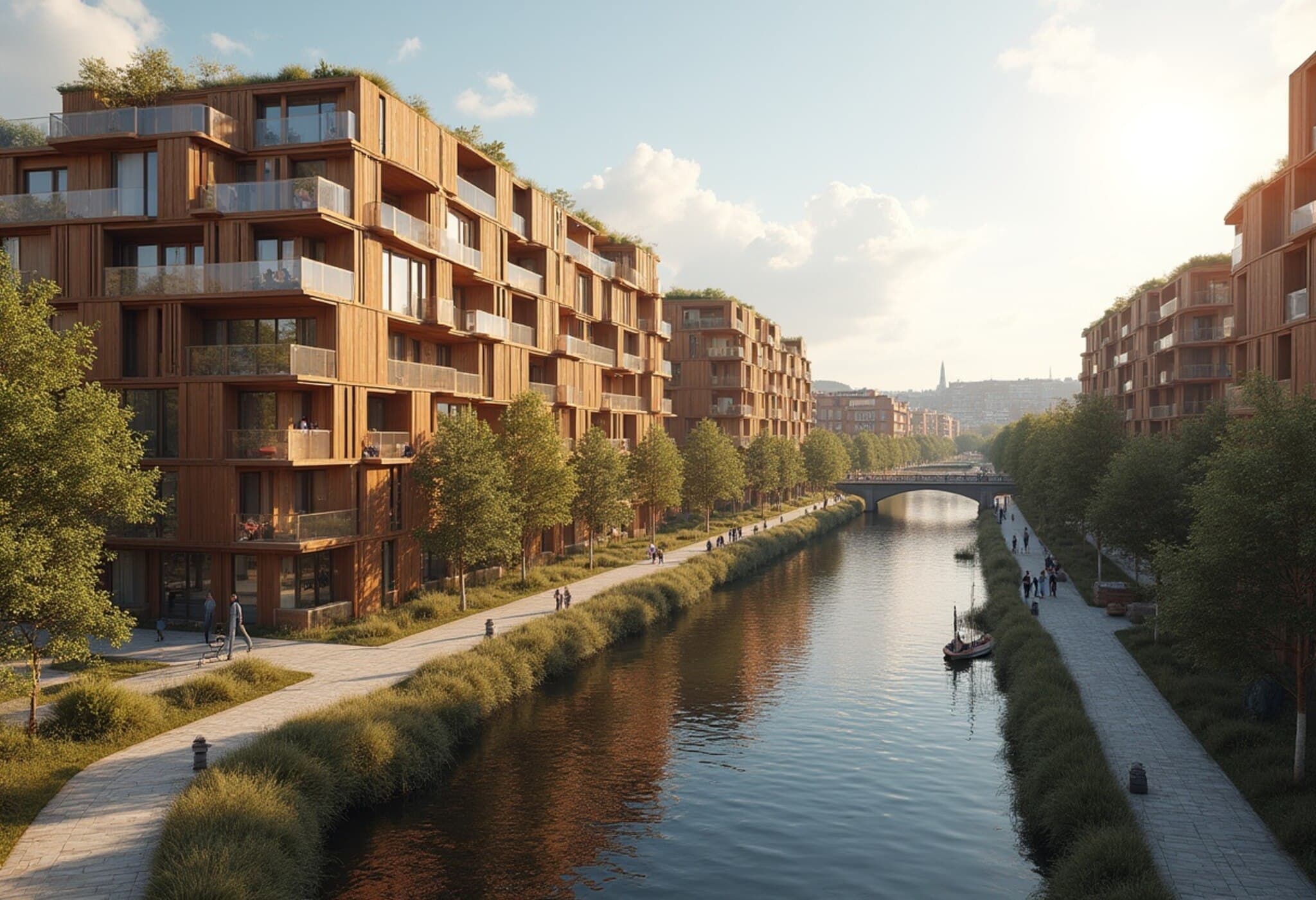The Birth of Europe’s Largest Wooden Urban Development
Stockholm is witnessing a transformative leap in urban planning and sustainable construction with the emergence of Stockholm Wood City. Set in the revitalized industrial district of Sickla, just south of Sweden’s capital, this ambitious project is redefining what city-building can look like in the face of a climate crisis.
With an investment of nearly $1.25 billion (12 billion SEK), Stockholm Wood City aims to become the world’s largest wooden construction initiative, leveraging advanced timber technologies to reconstruct a 250,000 square meter (2.7 million square feet) urban core. The buildings—comprising homes, offices, schools, shops, and cultural venues—will integrate wood at their very core, including walls, floors, and structural frameworks.
Why Wood? Rethinking Construction’s Carbon Footprint
The traditional construction industry is a colossal emitter, responsible for about 37% of global carbon emissions, largely due to the production and use of steel and concrete. This staggering figure has galvanized developers and architects worldwide to seek alternatives.
Cross-laminated timber (CLT), the primary material used in Stockholm Wood City, offers a path to drastically reduce emissions. A landmark USDA Forest Service study found that timber buildings can boast a carbon footprint up to 81% lower than concrete counterparts, and nearly 76% less than steel structures. This aligns the development with Sweden’s broader environmental agenda, targeting near-zero construction emissions by 2030.
Sweden’s Deep-Rooted Connection to Wood
Sweden’s enthusiasm for wood goes beyond sustainability—it’s enveloped in national culture and economy. Architect Oskar Norelius of White Arkitekter emphasizes that Swedes embrace their forests not just recreationally but as a vital bioresource. “Wood is more than a building material here — it’s part of our identity and economy, from energy to pulp products,” he notes.
Overcoming Challenges: Scaling Timber Construction Up
While wooden homes and buildings are common individually, creating an entire cityscape out of wood is uncharted territory. Atrium Ljungberg’s development head, Håkan Hyllengren, calls this a pioneering venture, highlighting the need to change perceptions around timber, particularly regarding fire safety regulations.
Notably, White Arkitekter’s 20-story Sara Kulturhus in northern Sweden has set a precedent for timber’s capacity in large-scale construction. It houses galleries, cultural spaces, and the innovative 200-room Wood Hotel, proving wood can be both functional and architecturally inspiring.
Designing for Flexibility and Longevity
Sickla isn’t just about new construction — it’s also about adaptability. Plans include dual-use buildings, capable of transitioning between residential and office spaces. This ingenious design allows buildings to enjoy a “second life,” maximizing utility and sustainability over time.
The Human Element: Why People Connect with Wood
There’s something innately comforting about wood’s tactile, warm presence. Visitors to the Sara Kulturhus have been captured hugging timber columns—an intimate interaction rarely seen with steel or concrete. Norelius ascribes this to wood’s visibility and inclusion in interiors, from structural beams to ventilation pipes, making buildings feel alive and approachable.
This connection extends beyond aesthetics: it influences market appeal. Hyllengren is optimistic that the beauty and sustainability of wood construction will translate into higher rental demand and returns, despite a slightly higher upfront cost compared to concrete.
Looking Ahead: The Future of Sustainable Cities
The first residential phase, Kvarter 7, consisting of 80 apartments, is slated for completion by the end of 2025. By 2027, Sickla is expected to accommodate around 2,000 additional homes, offices, and shared spaces, all integrated with efficient public transit links, including trains, trams, and new subway extensions.
Despite prevailing economic uncertainties and rising interest rates impacting real estate markets globally, there’s a growing sentiment that sustainable, well-connected urban projects like Stockholm Wood City offer resilience and long-term value.
Expert Insight: Transforming Industry Norms
- Policy implications: Stockholm’s model could inspire American cities to reassess building codes and incentivize mass timber adoption to meet carbon reduction goals.
- Economic benefits: Faster construction timelines with timber can reduce financing costs and accelerate project occupancy, crucial amid fluctuating interest rates.
- Social impact: Creating human-centered urban spaces with natural materials may improve occupant well-being and foster community connection.
Unanswered Questions
As wood construction scales up, crucial questions remain: How will fire safety standards evolve? Can supply chains keep pace sustainably? Will mass timber become a global norm or remain regional? Observing Stockholm’s experiment offers invaluable lessons for architects, policymakers, and developers globally.
Editor’s Note
Stockholm Wood City embodies a visionary blend of environmental responsibility, cultural heritage, and architectural innovation. As climate urgency mounts, this endeavor challenges entrenched norms, turning timber from niche to mainstream. The question is no longer if wood can replace concrete and steel—but how swiftly cities worldwide can embrace this greener blueprint. We invite readers to consider the potential of wooden cities not only as sustainable constructions but as ecosystems that nurture human connection and urban resilience.

















